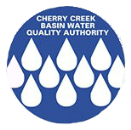Reservoir Model
A water quality model of the Reservoir was developed by Hydros Consulting to:
- Better understand the causes of chlorophyll α standard exceedances and cyanobacteria blooms;
- Determine the impacts of the destratification system;
- Provide a tool to help predict the effects of future management strategies.
CCBWQA chose a two-dimensional hydrodynamic and water quality model of the Cherry Creek Reservoir that simulated in-reservoir water quality for 2003-2017. To further investigate the findings of Model 2 (Increased Destratification System Mixing) a Bubble Plume Model was coupled with the Reservoir model to mechanistically simulate the effects of the destratification system on mixing in Cherry Creek Reservoir.
Concurrent with, although separate from the Bubble Plume Model, CCBWQA contracted with Wright Water Engineers to study the Reservoir Destratification System. WWE’s study led to discussion of many in-reservoir treatment options that CCBWQA can consider. As CCBWQA began to consider all of this, our meetings and interactions were disrupted by a different organism.
Useful Links

Reservoir Model- Some Things We Have Learned
- The primary factors that cause high algal growth in Cherry Creek Reservoir are:
- High external nutrient loading;
- High internal nutrient loading; and
- The Reservoir’s shallow depth and wind mixing ensures plenty of nutrients near the surface for algae to grow.
- Reducing Nitrogen and Phosphorus by 50% in Cherry Creek Reservoir inflows does not result in attaining the existing standard in all years.
- Since some cyanobacteria can fix nitrogen, they can gain an advantage if other important factors are in place (such as warm temperatures and calm conditions).
- The Bubble Plume Model showed that the existing Reservoir Destratification System provides some benefit, the benefits are limited.
